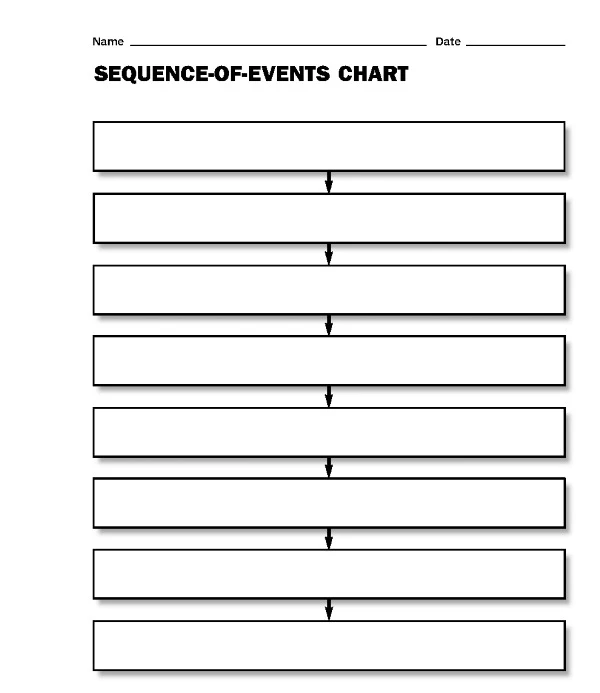Sequence Graphic Organizer
How to Use a Sequence Graphic Organizer to Improve Your Writing Skills
A sequence graphic organizer is a tool that helps you organize your ideas and information in a logical order. It can help you plan and write a variety of texts, such as narratives, instructions, explanations, and summaries. A sequence graphic organizer can also help you improve your comprehension and memory of what you read or learn.
A sequence graphic organizer usually consists of a series of boxes or circles that represent the main events or steps in a process. The boxes or circles are connected by arrows or lines that show the order and direction of the sequence. You can use different shapes, colors, or symbols to differentiate between different types of information, such as facts, opinions, causes, effects, problems, solutions, etc.
To use a sequence graphic organizer effectively, you need to follow these steps:
- Identify the purpose and audience of your text. This will help you decide what kind of sequence graphic organizer to use and what information to include. For example, if you are writing a narrative, you might use a story map that shows the setting, characters, problem, events, climax, and resolution. If you are writing an instruction manual, you might use a flowchart that shows the materials, steps, and tips for completing a task.
- Gather and sort your information. You can use various sources of information, such as books, articles, videos, interviews, observations, etc. You need to evaluate the credibility and relevance of your sources and select the most important and accurate information for your text. You also need to sort your information into categories or groups that fit your sequence graphic organizer. For example, if you are writing an explanation of how photosynthesis works, you might group your information into inputs, outputs, and stages.
- Fill in your sequence graphic organizer. You can use words, phrases, sentences, images, or symbols to fill in the boxes or circles of your sequence graphic organizer. You need to make sure that your information is clear and concise and that it follows a logical order. You also need to use transition words or phrases to connect your ideas and show the relationships between them. For example, if you are writing a summary of a book chapter, you might use words like first, next, then, after that, finally, etc.
- Review and revise your sequence graphic organizer. You need to check your sequence graphic organizer for accuracy and completeness and make any necessary changes. You can ask yourself questions like: Does my sequence graphic organizer cover all the main points of my text? Does my sequence graphic organizer follow a clear and logical order? Does my sequence graphic organizer use appropriate transition words or phrases? Does my sequence graphic organizer use consistent language and format?
- Write your text based on your sequence graphic organizer. You can use your sequence graphic organizer as a guide or outline for writing your text. You need to expand your information into complete sentences and paragraphs and add any details or examples that support your main points. You also need to follow the conventions of grammar, spelling, punctuation, and style for your type of text. You can use tools like spell checkers or grammar checkers to help you with this step.
- Edit and proofread your text. You need to review your text for clarity and coherence and make any necessary changes. You can ask yourself questions like: Does my text have a clear purpose and audience? Does my text have a clear introduction, body, and conclusion? Does my text have smooth transitions between sentences and paragraphs? Does my text have correct grammar, spelling, punctuation, and style? You can also ask someone else to read your text and give you feedback.
Using a sequence graphic organizer can help you improve your writing skills by helping you organize your ideas and information in a logical order. It can also help you improve your comprehension and memory of what you read or learn. You can use different types of sequence graphic organizers for different purposes and audiences. You can also create your own sequence graphic organizers based on your needs and preferences.

